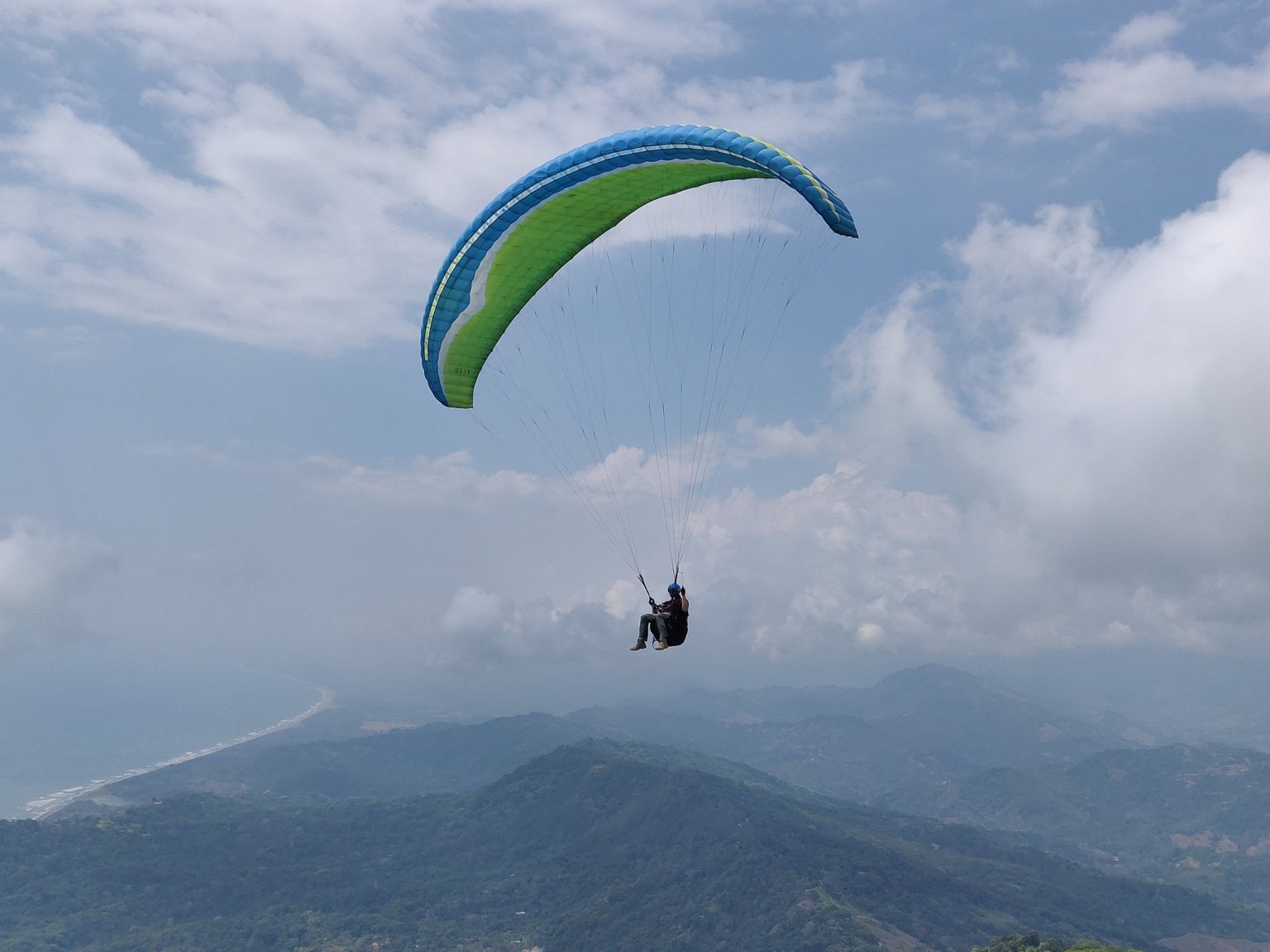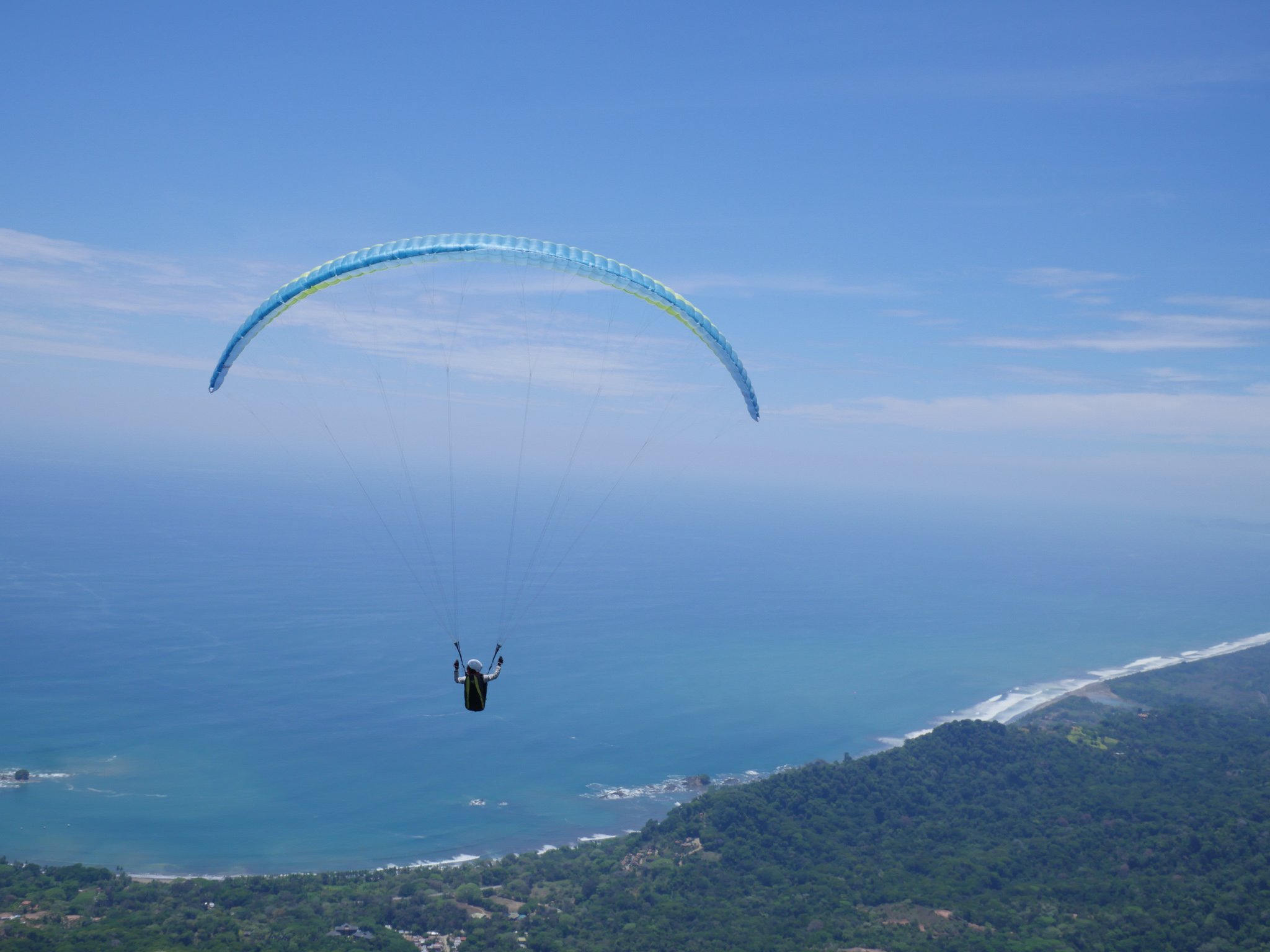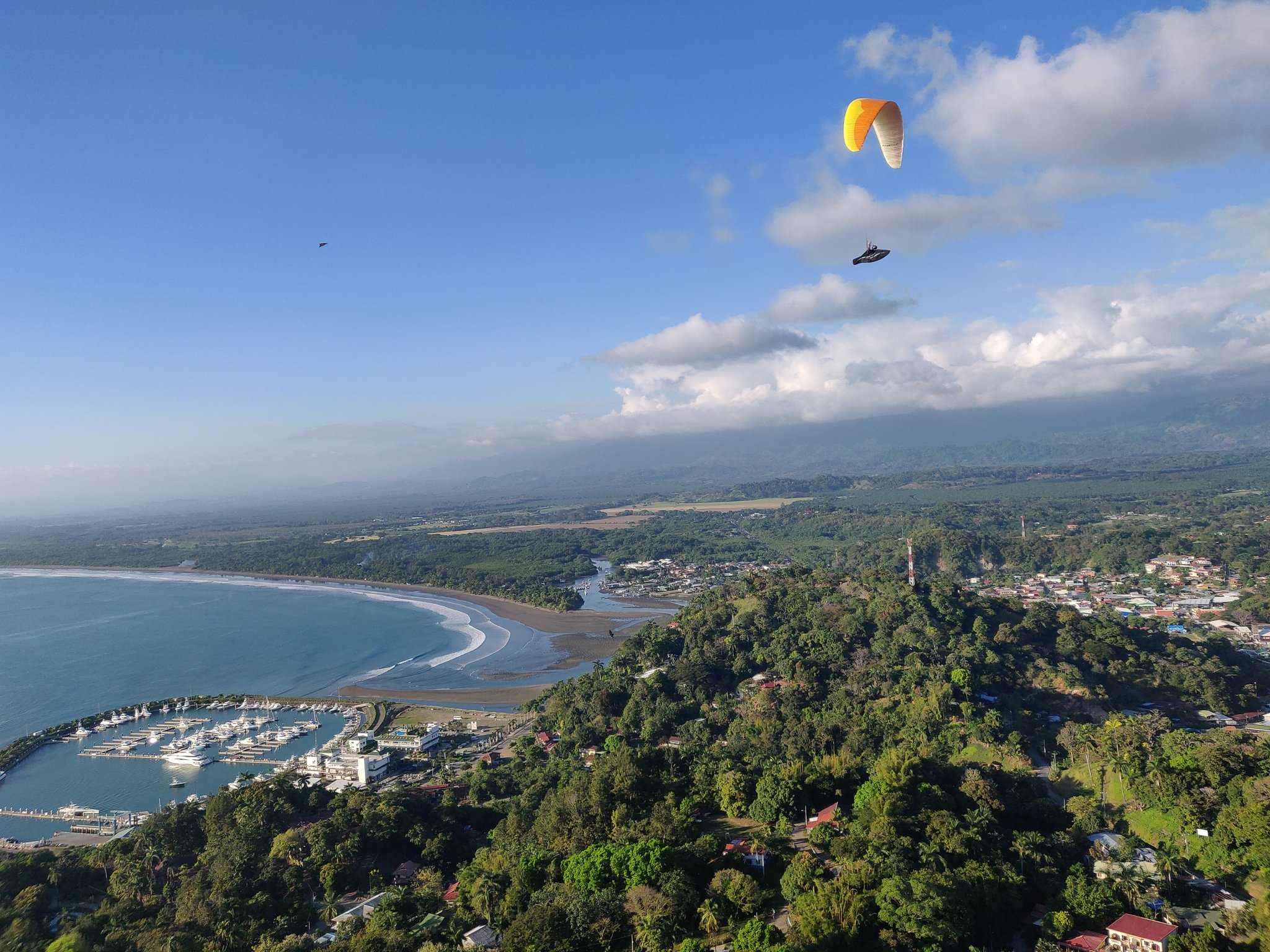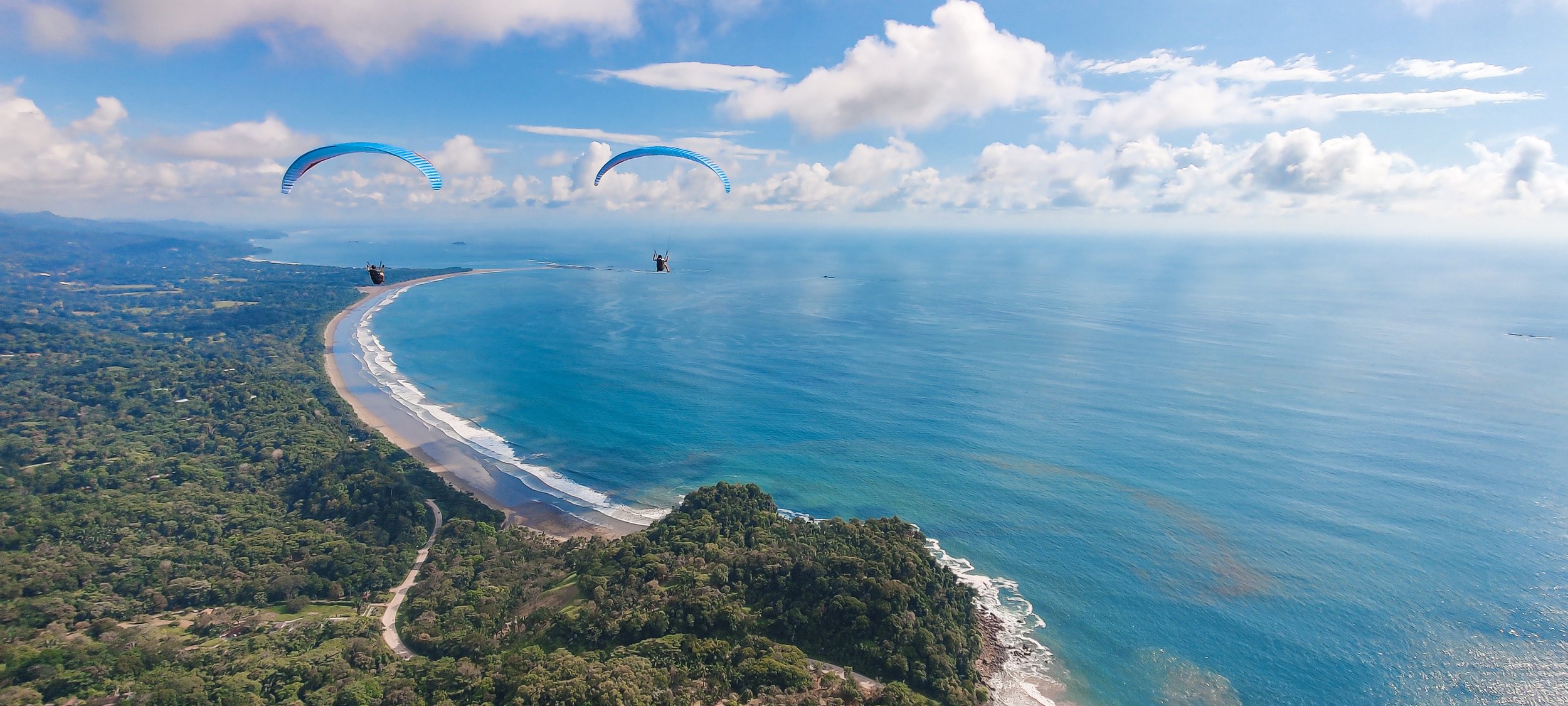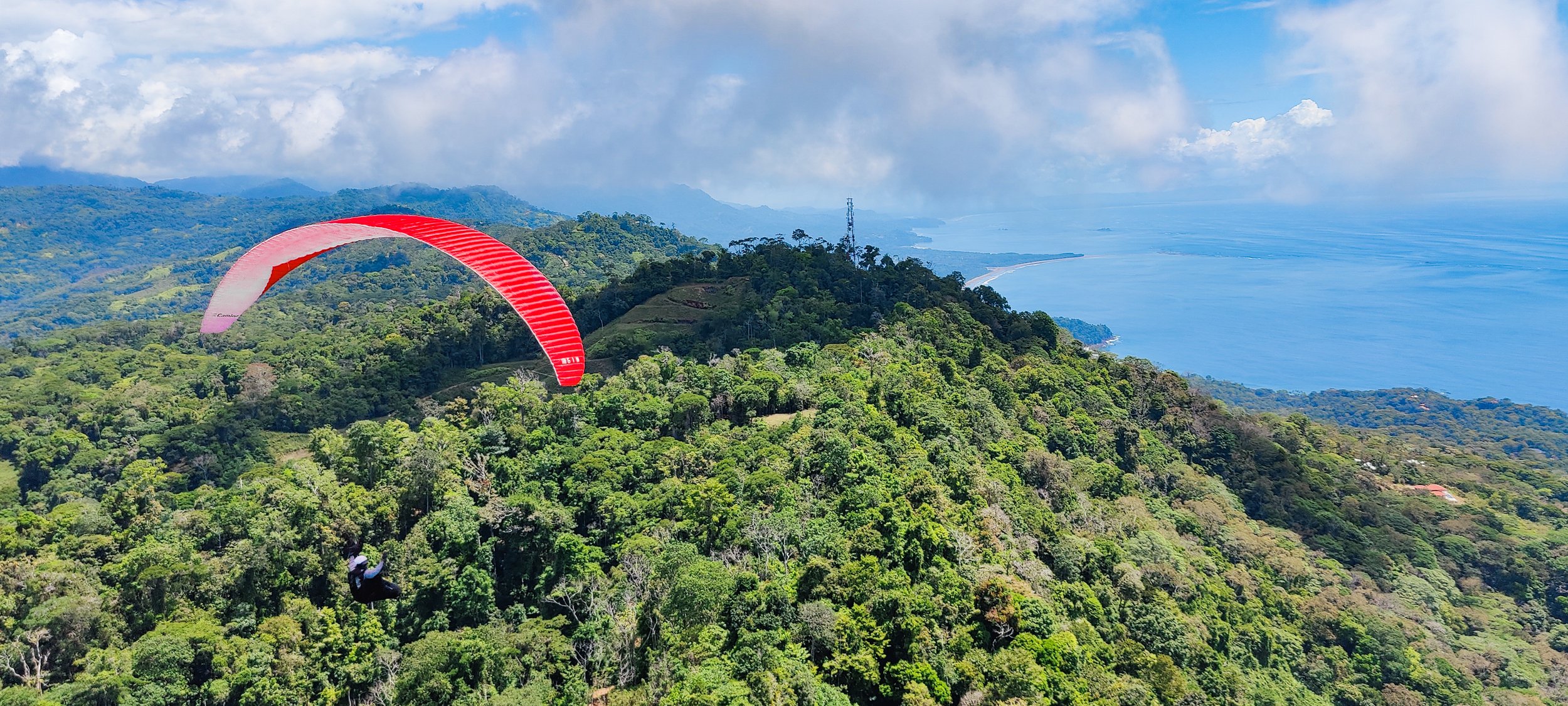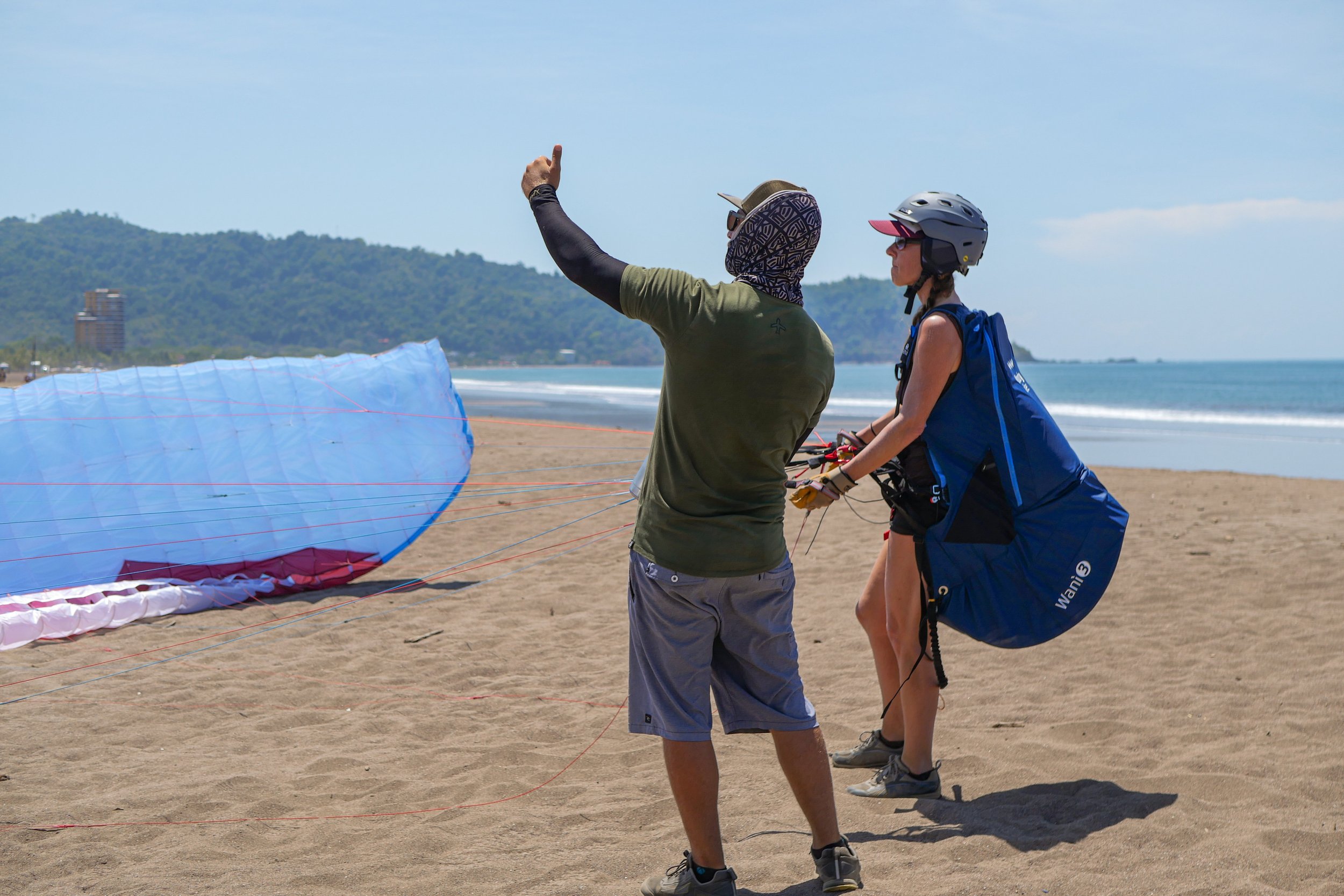Site Guide: Escalares, Dominical
Dominical, Costa Rica
Discover beautiful views of the pacific on this thermal dynamic ridge for the most scenic flying in Costa Rica
Dominical has been flown for almost 20 years by local and visiting pilots to the area. This is the site most pilots think of when visiting Costa Rica for paragliding and for good reason. Not only is the flying here picturesque but it’s one of those magical places where pilots go from novice to the next level, racking up hours in the air as the different cycles of thermals come through. From beginners to advanced pilots, there’s fun for everyone to have when flying in Dominical.
FYI: The launch owner charges 5000 Colones per day for each pilot to fly. This fee covers as many flights as you like for the day when launching here. Someone will be on launch to take cash payment from you.
The Facts
Launch Altitude: 560M
LZ Altitude:
Sea Level
Site Record: 145KM
The Site
The Dominical take-off, or Domi as the locals call it, is on the coastal ridge of the south pacific. Facing West to the ocean, this site switches on at about 10.30-11 most mornings once the sun has come high enough in the sky to heat the ocean side of the ridge.
Many believe Dominical is a soaring site as the wind at the take-off can feel fairly strong but the site is much more thermic than dynamic with lots of house thermals to take you to cloud base.
Many birds circle in the thermals helping pilots find climbs throughout the day. Beginners should always seek a site introduction here prior to flying and the instructors at Zion Paragliding will be happy to help.
There are two cell towers on this ridge. The cell tower at the southern end of the ridge marks the end of Dominical ridge and the flying limit for our beginner paragliding students. Flying south beyond the cell tower can be committing as there are little to no beach landings until reaching Playa Hermosa in Uvita.
Be aware of the end of the ridge to the North. There’s a gap in the ridge here making a venturi effect. In contrast to this, the end of the ridge here is also a good house thermal but we recommend that pilots only join this thermal with some altitude above ridge height.
The Launch
The take-off is a nice grassy area with plenty of wind for a nice launch. Unusually the take-off is completely flat and does require pilots to run-off the launch with style by keeping their wing inflated as they kite it to the edge.
Taking off from North end of the launch area near the windsock is the best position. Please remember that here in Dominical tandems have priority for taking off and when in the air. They also frequently top land with passengers and pilots need to be aware of this to keep the space free. Please set-up to the side towards the shaded area instead of in prime take-off position.
The Landing
Dominicalito Beach
Immediately in front of the take-off is Dominicalito Beach, this is the closest and easiest landing for all pilots to use and is usually on glide for most pilots when leaving the ridge at take-off height. The wind can vary day to day on the landing and pilots should feel what way they drift here to set-up for landing. There isn’t usually a windsock here and the flag on the beach isn’t always visible if you’re not flying over it. At high tide there’s almost no beach to make a safe landing and pilots will need to land on the small strip of dry sand at the south end of the beach. When flying at high tide you may want to consider some of the other landings to avoid the wet sand.
Dominicalito Soccer Field
There is a small soccer field that can be used for landings before reaching Dominicalito beach, this is a good landing for pilots who aren’t high enough to make the beach, pilots who don’t want to get there gliders in the sand or when it’s high tide. The soccer field can be a tight space and also thermic, so pilots should be aware of the correct approach into the field over the roof in the corner of the soccer field and land towards the ocean into the wind. Frequently there is no wind here and landings can be hot.
Dominical Beach
This beach is the big sister to Dominicalito and can’t be seen from the take-off. It sits just a couple of km north of the launch in front of the smaller ridge that can be seen at take-off, the locals call it the front ridge. The nice thing about this beach is that there’s always plenty of it for landing, even at high tide. To make the transition to this beach, pilots will need to leave the ridge about 100 meters above it or at cloud base (higher is better) at the North end of the ridge. Pilots should fly directly towards the southern end of the lower ridge but never behind it, aiming for the orange roofed houses on the corner of the ridge. If you make it to the ridge at ridge height or higher you are fine to hop on to this ridge and follow it North and then glide over the town of Dominical and land on the beach. If you are lower than the ridge height after the transition we recommend heading back to Dominicalito beach to land. There might be some lift above the houses on the corner and patient pilots can climb out and head down the front ridge Once you arrive at Dominical beach you will notice the life guard hut. We always try to land as close to it as possible to minimize the walk from the beach to the bar.
Flying Tips
For beginners to thermalling Dominical is all about staying up in the different cycles and flying the length of the ridge. It’s a fun site and a place to learn. The ridge can get busy so we ask pilots to remember the right of way rule and join thermals by turning in the same direction as pilots already climbing.
Experienced pilots or those wanting XC can push either North or South and follow the coastal ridge for as far as they wish. There are a few parts of the ridge that are committing with little or no landings but the tropical climate makes for slower climbs and nice mellow flights.
How To Get There
The launch is accessible only by car from the highway through several different routes but all routes will require 4x4 to make it up to the hill. The easiest way up is to follow signs for the Jolly Roger bar and continue past it. Whilst on the concrete section of road there will be a left turn (also concrete) take this exit and follow it all the way to the take-off - you will know you are there when you see a big concrete gated entrance. Zion Paragliding does offer spaces to pilots in the tandem shuttle providing it is not already full of tandem passengers.


